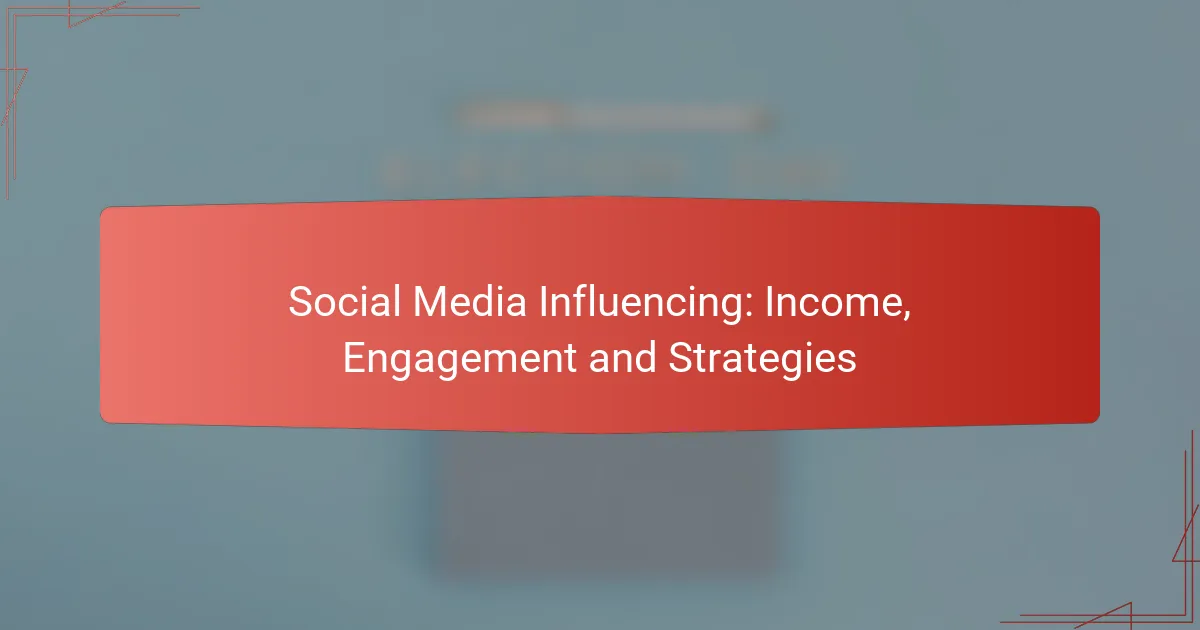Media appearances play a crucial role in boosting earnings by enhancing visibility and credibility, which can open up diverse revenue opportunities. The reach of these appearances not only measures audience size but also their potential to shape public perception and engagement, ultimately influencing consumer attitudes and behaviors.

How do media appearances impact earnings?
Media appearances significantly enhance earnings by increasing visibility and credibility, which can lead to various revenue streams. The more exposure a brand or individual receives, the greater the potential for financial gain through advertising, sponsorships, and sales.
Increased advertising revenue
Media appearances can lead to increased advertising revenue as brands leverage the heightened visibility to attract advertisers. When a personality or brand is featured prominently, advertisers are often willing to pay a premium for ad placements, knowing that the audience engagement will be higher.
For example, a popular influencer appearing on a talk show may see their social media engagement spike, leading to a surge in advertising deals. Brands may offer rates that are 20-50% higher than standard due to the increased reach and engagement.
Higher sponsorship deals
Higher visibility from media appearances often translates into more lucrative sponsorship deals. Companies are keen to partner with individuals or brands that have a strong media presence, believing that this association will enhance their own brand image.
For instance, a celebrity who frequently appears on television may secure sponsorships worth thousands to millions of dollars, depending on their reach and influence. Brands typically assess the potential return on investment (ROI) before committing, looking for personalities with a proven track record of engagement.
Boosted product sales
Media appearances can directly boost product sales by creating buzz and driving consumer interest. When a product is showcased in a popular media format, it often leads to immediate spikes in sales, as viewers are motivated to purchase what they see.
For example, a chef appearing on a cooking show may promote a specific kitchen gadget, resulting in a significant increase in sales for that product, sometimes by 30-70% in the weeks following the appearance. Brands should strategically plan media appearances to align with product launches for maximum impact.

What is the reach of media appearances?
The reach of media appearances refers to the extent to which these appearances can influence audiences across various platforms. This includes both the number of viewers or listeners and the potential impact on public perception and engagement.
National audience exposure
National audience exposure indicates how many people within a specific country are likely to see or hear a media appearance. For instance, a television interview on a major network can reach millions, while a local radio segment may only attract thousands. Understanding the demographics of the audience can help tailor the message effectively.
Consider the time of day and the medium used, as these factors significantly affect viewership. Prime time slots on popular channels generally yield higher exposure compared to off-peak times. Aim for appearances that align with peak audience engagement to maximize reach.
Global market penetration
Global market penetration involves the ability of media appearances to reach audiences beyond national borders. This can be achieved through international news outlets, online streaming, and social media platforms that have a global user base. For example, a viral video on a platform like YouTube can garner millions of views from various countries.
When targeting a global audience, consider cultural differences and language barriers. Localizing content or providing subtitles can enhance understanding and engagement. Collaborating with international influencers can also extend reach into new markets.
Social media amplification
Social media amplification refers to the ability of media appearances to be shared and discussed across social networks, significantly increasing their reach. A single appearance can be transformed into multiple posts, shares, and comments, creating a ripple effect that enhances visibility.
To maximize social media amplification, encourage audience interaction through calls to action, such as sharing or commenting. Utilize hashtags and tag relevant accounts to broaden the conversation. Regularly engaging with followers can also sustain interest and keep the content circulating.

How do media appearances influence brand perception?
Media appearances significantly shape brand perception by enhancing visibility and credibility. When brands are featured in reputable media outlets, they gain recognition and can positively influence consumer attitudes and behaviors.
Enhanced credibility
Media appearances can greatly enhance a brand’s credibility. When a brand is featured in trusted publications or on respected platforms, it signals to consumers that the brand is legitimate and authoritative in its field. This third-party endorsement can be more persuasive than traditional advertising.
For example, a tech startup that secures coverage in a leading technology magazine may be viewed as more innovative and trustworthy compared to competitors without such exposure. Brands should aim to build relationships with journalists and influencers to increase their chances of being featured.
Improved public image
Regular media appearances help improve a brand’s public image by allowing it to communicate its values and mission directly to the audience. This visibility helps shape how consumers perceive the brand, making it more relatable and humanized.
For instance, a company that actively participates in community service and shares these stories through media channels can cultivate a positive image, appealing to socially conscious consumers. Brands should consistently showcase their initiatives and successes to reinforce a favorable public image.
Increased consumer trust
Media appearances can lead to increased consumer trust, as they provide transparency and accountability. When brands openly share their stories, challenges, and successes through interviews or features, they foster a sense of connection with their audience.
Trust can be further enhanced by addressing customer concerns in media discussions. For example, a brand that openly discusses its sustainability practices in a news segment may gain the trust of environmentally conscious consumers. Brands should prioritize honesty and authenticity in their media communications to build lasting trust.

What are the key metrics for measuring media appearance success?
Key metrics for measuring media appearance success include audience engagement rates, return on investment (ROI), and media impressions. These metrics provide insights into how effectively a media appearance resonates with the audience and contributes to overall business goals.
Audience engagement rates
Audience engagement rates reflect how actively viewers interact with content following a media appearance. This can include likes, shares, comments, and other forms of participation across platforms. High engagement rates indicate that the content is resonating well with the audience.
To measure engagement, track metrics such as the number of comments or shares relative to total views. A good benchmark is an engagement rate of 1-5% for social media posts, but this can vary by industry and platform.
Return on investment (ROI)
Return on investment (ROI) assesses the financial return generated from a media appearance relative to its cost. Calculating ROI involves comparing the revenue attributed to the appearance against expenses incurred, such as production costs and promotional spending.
A positive ROI indicates that the media appearance was financially beneficial. Aim for an ROI of at least 100% to ensure that the investment is worthwhile. Consider both direct sales and long-term brand awareness when evaluating ROI.
Media impressions
Media impressions measure how many times content is displayed, regardless of whether it was clicked or engaged with. This metric helps gauge the overall reach of a media appearance and its potential visibility among target audiences.
To effectively track impressions, utilize analytics tools that provide data on views across various platforms. Aiming for tens of thousands of impressions can be a good target for larger campaigns, but smaller appearances may yield fewer impressions while still being impactful.

What factors affect the effectiveness of media appearances?
The effectiveness of media appearances is influenced by several key factors, including content quality, timing, and alignment with the target audience. Understanding these elements can significantly enhance the reach and impact of any media engagement.
Content quality
High-quality content is essential for effective media appearances. This includes clear messaging, engaging storytelling, and relevant information that resonates with the audience. Well-researched and professionally presented content can enhance credibility and encourage audience engagement.
To ensure content quality, focus on clarity and relevance. Use simple language, avoid jargon, and tailor your message to the specific context of the appearance. For example, a financial expert discussing market trends should provide clear data and actionable insights rather than complex theories.
Timing of appearances
The timing of media appearances plays a crucial role in their effectiveness. Choosing the right moment can maximize visibility and audience engagement. Consider factors such as current events, seasonal trends, and peak viewing times to optimize the impact of your appearance.
Avoid scheduling appearances during major competing events or when your target audience is less likely to be engaged. For instance, launching a new product during a major holiday season can lead to increased attention, while doing so during a significant political event may overshadow your message.
Target audience alignment
Aligning your media appearances with the interests and demographics of your target audience is vital for effectiveness. Understanding who your audience is and what they care about allows you to tailor your message accordingly, increasing the likelihood of resonance and engagement.
Conduct audience research to identify preferences, behaviors, and pain points. For example, if your target audience consists of young professionals, focus on topics that address their career development and financial planning. This alignment can significantly enhance the reach and influence of your media presence.

How can brands optimize media appearances for better results?
Brands can optimize media appearances by strategically planning their outreach, leveraging analytics for insights, and collaborating with influencers to enhance their visibility and impact. These approaches help ensure that media engagements align with brand goals and resonate with target audiences.
Strategic planning
Effective strategic planning involves identifying key media outlets and formats that align with the brand’s objectives. Brands should consider their target audience’s preferences, the type of content that performs well in those outlets, and the timing of their appearances to maximize engagement.
Creating a media calendar can help brands schedule appearances around relevant events or trends, ensuring timely and contextually relevant messaging. This proactive approach can significantly enhance the effectiveness of media efforts.
Leveraging analytics
Utilizing analytics is crucial for understanding the impact of media appearances. Brands should track metrics such as audience reach, engagement rates, and conversion statistics to evaluate performance. Tools like Google Analytics and social media insights can provide valuable data on how audiences interact with media content.
By analyzing this data, brands can refine their strategies, focusing on what works best and adjusting their approaches based on audience feedback and behavior. Regularly reviewing analytics helps in making informed decisions for future media appearances.
Collaborating with influencers
Collaborating with influencers can amplify a brand’s media presence and credibility. Influencers often have established trust with their audiences, making their endorsements more impactful. Brands should select influencers whose values align with their own to ensure authentic partnerships.
When working with influencers, it’s important to define clear goals and expectations. This includes discussing content formats, messaging, and performance metrics to measure the success of the collaboration. A well-executed influencer partnership can significantly boost brand visibility and engagement in media appearances.



